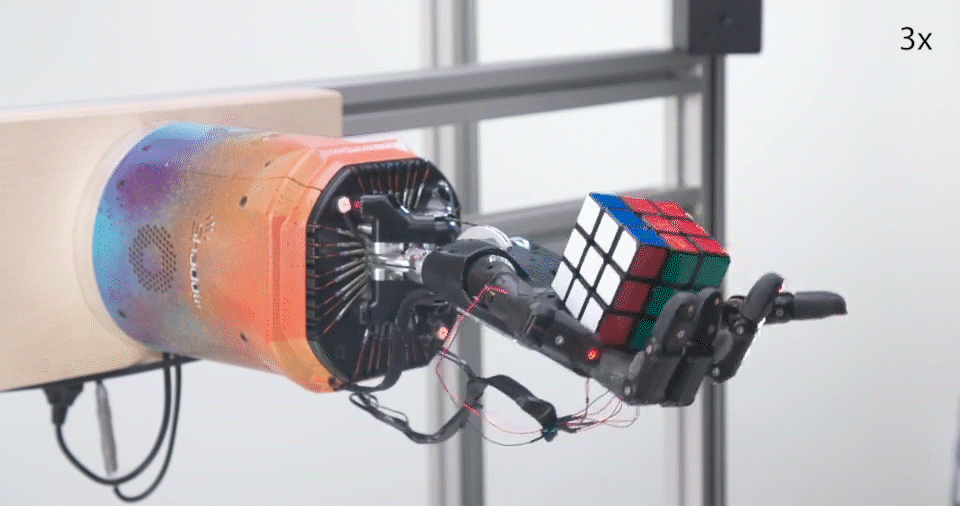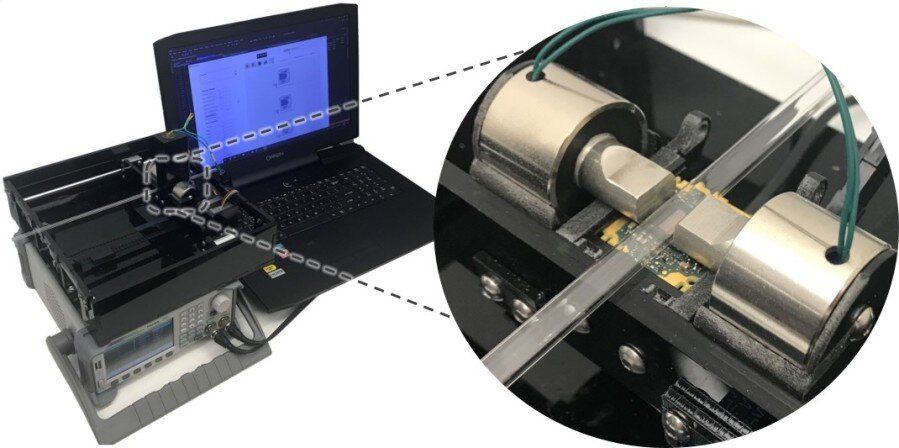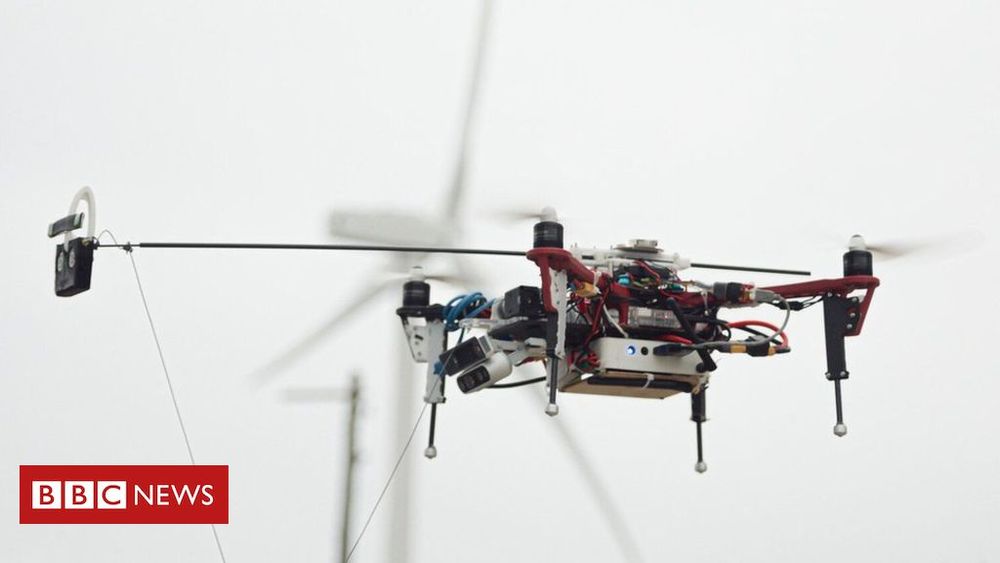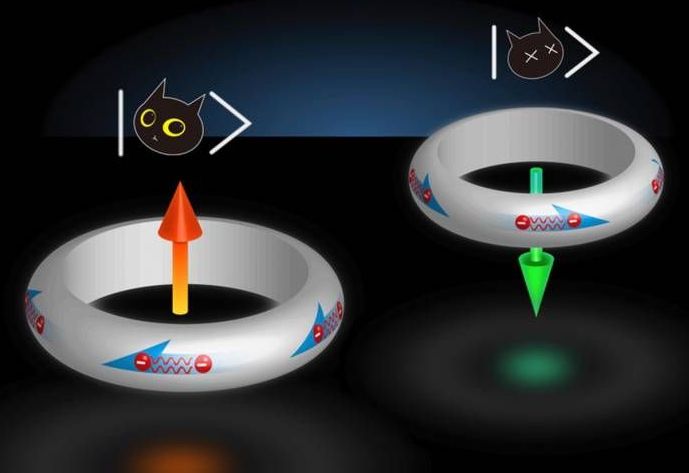Researchers at OpenAI have developed a new method for transferring complex manipulation skills from simulated to physical environments.



In work that combines a deep understanding of the biology of soft-bodied animals such as earthworms with advances in materials and electronic technologies, researchers from the United States and China have developed a robotic device containing a stretchable transistor that allows neurological function.
Cunjiang Yu, Bill D. Cook Associate Professor of Mechanical Engineering at the University of Houston, said the work represents a significant step toward the development of prosthetics that could directly connect with the peripheral nerves in biological tissues, offering neurological function to artificial limbs, as well as toward advances in soft neurorobots capable of thinking and making judgments. Yu is corresponding author for a paper describing the work, published in Science Advances.
He is also a principal investigator with the Texas Center for Superconductivity at the University of Houston.
Artificial intelligence research organization OpenAI has achieved a new milestone in its quest to build general purpose, self-learning robots. The group’s robotics division says Dactyl, its humanoid robotic hand first developed last year, has learned to solve a Rubik’s cube one-handed. OpenAI sees the feat as a leap forward both for the dexterity of robotic appendages and its own AI software, which allows Dactyl to learn new tasks using virtual simulations before it is presented with a real, physical challenge to overcome.
In a demonstration video showcasing Dactyl’s new talent, we can see the robotic hand fumble its way toward a complete cube solve with clumsy yet accurate maneuvers. It takes many minutes, but Dactyl is eventually able to solve the puzzle. It’s somewhat unsettling to see in action, if only because the movements look noticeably less fluid than human ones and especially disjointed when compared to the blinding speed and raw dexterity on display when a human speedcuber solves the cube in a matter of seconds.
But for OpenAI, Dactyl’s achievement brings it one step closer to a much sought-after goal for the broader AI and robotics industries: a robot that can learn to perform a variety of real-world tasks, without having to train for months to years of real-world time and without needing to be specifically programmed.

Detection of rare cells in blood and other bodily fluids has numerous important applications including diagnostics, monitoring disease progression and evaluating immune response. For example, detecting and collecting circulating tumour cells (CTCs) in blood can help cancer diagnostics, study their role in the metastatic cascade and predict patient outcomes. However, because each millilitre of whole blood contains billions of blood cells, the rare cells (such as CTCs) that occur at extremely low concentrations (typically lower than 100‑1000 cells per millilitre) are very difficult to detect. Although various solutions have been developed to address this challenge, existing techniques in general are limited by high cost and low throughput.
Researchers at UCLA Henry Samueli School of Engineering have developed a new cytometry platform to detect rare cells in blood with high throughput and low cost. Published in Light: Science and Applications, this novel cytometry technique, termed magnetically modulated lensless speckle imaging, first uses magnetic bead labelling to enrich the target cells. Then the enriched liquid sample containing magnetic bead-labelled target cells is placed under an alternating magnetic field, which causes the target cells to oscillate laterally at a fixed frequency. At the same time, a laser diode illuminates the sample from above and an image sensor positioned below the sample captures a high-frame-rate lensless video of the time-varying optical pattern generated by the sample. The recorded spatiotemporal pattern contains the information needed to detect the oscillating target cells.
The researchers built a compact and low-cost prototype of this computational lensless cytometer using off-the-shelf image sensors, laser diodes and electromagnets, and used a custom-built translation stage to allow the imager unit to scan liquid sample loaded in a glass tube. The prototype can screen the equivalent of ~1.2 mL of whole blood sample in ~7 min, while costing only ~$750 and weighing ~2.1 kg. Multiple parallel imaging channels can also be easily added to the system to further increase sample throughput.

A team of researchers from the Universitat Politècnica de València (UPV) and the Université Paul Sabatier-Toulouse III (France) have developed a system that is capable of managing all traffic in a city, which will help to prevent traffic jams while reducing the driving times of vehicles and pollution levels. The system has been designed for autonomous vehicles and includes a route provider service capable of forecasting the present and future density of traffic in the city. It also takes that information into account when choosing new routes. The work has been published in Electronics.
Unlike existing systems that can suggest alternative routes depending on the bottlenecks at a certain time, the new system makes it possible to find out the present and future density of traffic in the entire metropolitan area, and controls traffic as a whole, aiming to minimize or totally eliminate traffic jams. In addition, it allows including different criteria—environmental, atypical situations, accidents, etc.—to dynamically provide advice about routes.
“Our proposal makes it easier for authorities to restrict or eliminate traffic in a certain area during the time period they find appropriate. For example, reducing traffic next to schools during the entry/exit hours, or in areas where ambulances circulate or an accident has happened, etc.,” explains Carlos Tavares Calafate, researcher at the Networking Research Group-DISCA of the UPV and coordinator of the work.

Presented by Beyond Limits
Conventional, data-crunching artificial intelligence, which is the foundation of deep learning, isn’t enough on its own; the human-like reasoning of symbolic artificial intelligence is fascinating, but on its own, it isn’t enough either.
The unique hybrid combination of the two — numeric data analytics techniques that include statistical analysis, modeling, and machine learning, plus the explainability (and transparency) of symbolic artificial intelligence — is now termed “cognitive AI.”

Individuals of the same age may not age at the same rate. Quantitative biomarkers of aging are valuable tools to measure physiological age, assess the extent of ‘healthy aging’, and potentially predict health span and life span for an individual. Given the complex nature of the aging process, the biomarkers of aging are multilayered and multifaceted. Here, we review the phenotypic and molecular biomarkers of aging. Identifying and using biomarkers of aging to improve human health, prevent age-associated diseases, and extend healthy life span are now facilitated by the fast-growing capacity of multilevel cross-sectional and longitudinal data acquisition, storage, and analysis, particularly for data related to general human populations. Combined with artificial intelligence and machine learning techniques, reliable panels of biomarkers of aging will have tremendous potential to improve human health in aging societies.
Keywords: physiological age, phenotypic, molecular, age-associated diseases, aging process.
Aging is the time-dependent physiological functional decline that affects most living organisms, which is underpinned by alterations within molecular pathways, and is also the most profound risk factor for many non-communicable diseases. To identify biomarkers of aging would, on one hand, facilitate differentiation of people who are of the same chronological age yet have variant aging rates. Quantitative biomarkers of aging could also define a panel of measurements for ‘healthy aging’ and, even further, predict life span. On the other hand, biomarkers of aging could also assist researchers to narrow their research scope to a specific biological facet in their attempts to explain the biological process behind aging or aging-related diseases. Here, we review the phenotypic and molecular biomarkers of aging. Phenotypic biomarkers can be non-invasive, panoramic, and easy to obtain, whereas molecular biomarkers can reflect some of the molecular mechanisms underlying age status.


Quantum computers have the potential to someday far outperform our traditional machines, thanks to their ability to store data on “qubits” that can exist in two states at once. That sounds good in theory, but in practice it’s hard to make materials that can do that and stay stable for long periods of time. Now, researchers from Johns Hopkins University have found a superconducting material that naturally stays in two states at once, which could be an important step towards quantum computers.
Our current computers are built on the binary system. That means they store and process information as binary “bits” – a series of ones and zeroes. This system has worked well for us for the better part of a century, but the general rate of computing progress has started to slow down in recent years.
Quantum computers could turn that trend on its head. The key is the use of qubits, which can store data as either a one, a zero or both at the same time – much like Schrödinger’s famous thought experiment with the cat that’s both alive and dead at the same time. Using that extra power, quantum computers would be able to outperform traditional ones at tasks involving huge amounts of data, such as AI, weather forecasting, and drug development.

These are just some examples of how easy it is to break the leading pattern-recognition technology in AI, known as deep neural networks (DNNs). These have proved incredibly successful at correctly classifying all kinds of input, including images, speech and data on consumer preferences. They are part of daily life, running everything from automated telephone systems to user recommendations on the streaming service Netflix. Yet making alterations to inputs — in the form of tiny changes that are typically imperceptible to humans — can flummox the best neural networks around.
Artificial-intelligence researchers are trying to fix the flaws of neural networks.